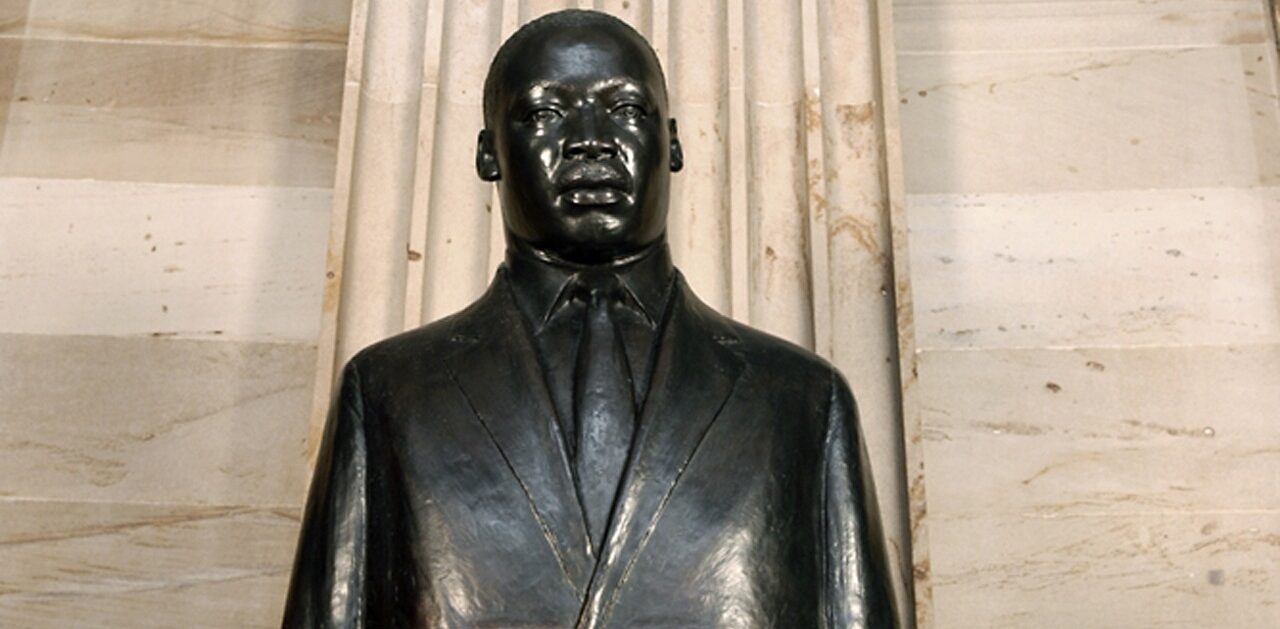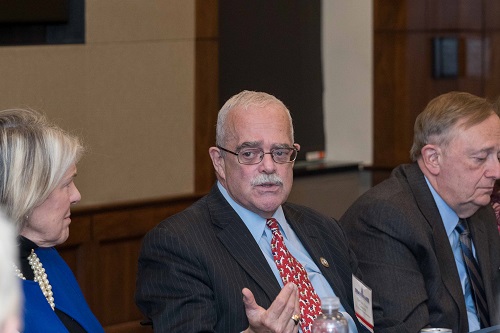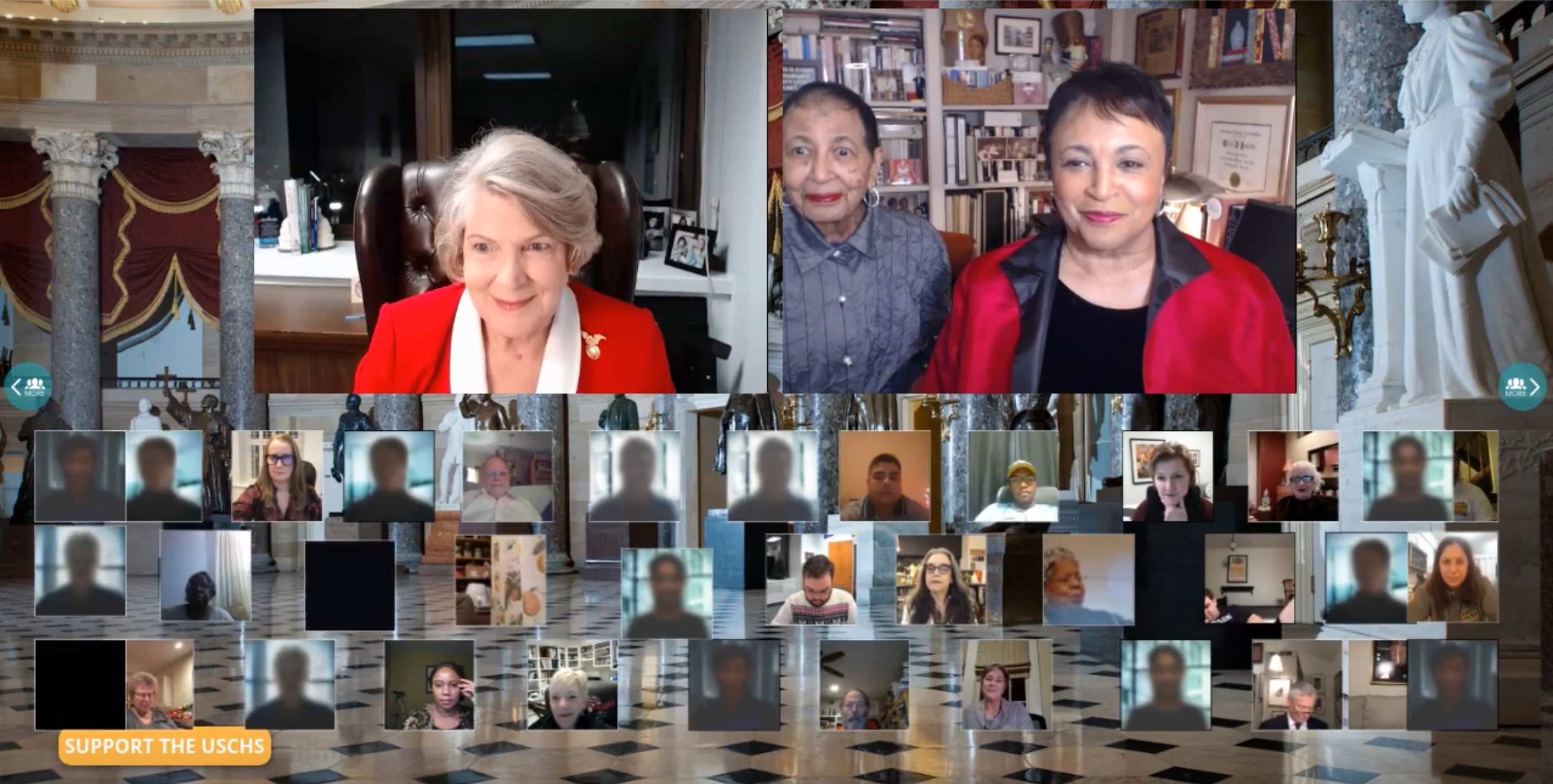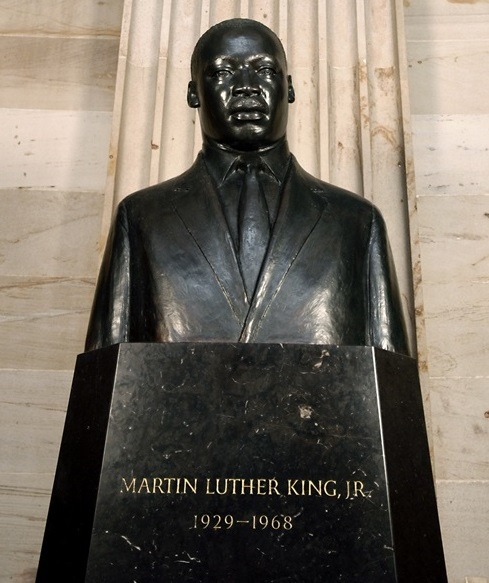
Written by Ronald M. Johnson
On January 16, 1986, Coretta Scott King unveiled the memorial bust of her husband in the Capitol Rotunda. The unveiling, a moving event unto itself, helped inaugurate the larger observance of the first federal holiday honoring his life. Resting on a black marble base, the bronze sculpture reflected the strength that Martin Luther King, Jr. embodied throughout his short life. The day marked a major step forward in advancing the legacy of a man who Congress and President Ronald Reagan had honored just three years earlier with legislation establishing a national holiday in his honor.
The King sculpture immediately became an important part of the large grouping of federal statuary that is on display in the Rotunda, a room with the feel of a sacred setting for those who visit. In this space, art and politics merge. There are statues of George Washington, Abraham Lincoln, Dwight David Eisenhower, Ulysses S. Grant, Thomas Jefferson, and Alexander Hamilton, among others, as well as the Portrait Monument to Lucretia Mott, Elizabeth Cady Stanton, and Susan B. Anthony. The lives represented by this statuary remind all Americans of the nation’s long and illustrious history.
At the same time, each of these works of art brought recognition to the artists who created them. The artistry of Antoine Houdon, Vinnie Ream, Jim Brothers, Franklin Simmons, Pierre-Jean David d’Angers, Horatio Stone, and Adelaide Johnson, among many others, reflect a wide and diverse array of sculpture stretching back to the early nineteenth century. In this space, at the very center of the U.S. Capitol, artists sought to portray in stone individuals who had played critical roles in the shaping of American society.
The King memorial bust added a new artist to this group. Born in Roxbury, Massachusetts, in 1922, African-American sculptor John Wilson brought a unique perspective to his work. Initially trained at Tufts University and then as an art student in both Paris and Mexico City, he had been a professor at Boston University since 1964. His work could be found in major museums and galleries throughout the nation, such as the DeCordova Museum and the Museum of Modern Art. He pursued his art with a strong sense of purpose. “Essentially, he felt that his main objective as an artist was to deliver a message to people about black dignity, about racial justice, about poor people trying to get a better deal in life,” his wife Julie Kowitch noted.
In early 1983, John Wilson joined the competition with other sculptors in response to House Concurrent Resolution 153, which sought to memorialize the famous civil rights activist. In 1985, the selection committee, including Coretta Scott King, chose John Wilson’s submission and awarded him a commission to cast his winning model for the memorial bust in bronze.
Over the next year, Wilson steadily worked on this task. His son Roy remembered that he “moved with tremendous energy. Each stroke seemed decisive.” Finally, by year’s end, the bust was completed. Then in early 1986, before the unveiling, he covered his work with an old sleeping bag, placed it in the back of his car, and headed to the Capitol Rotunda.
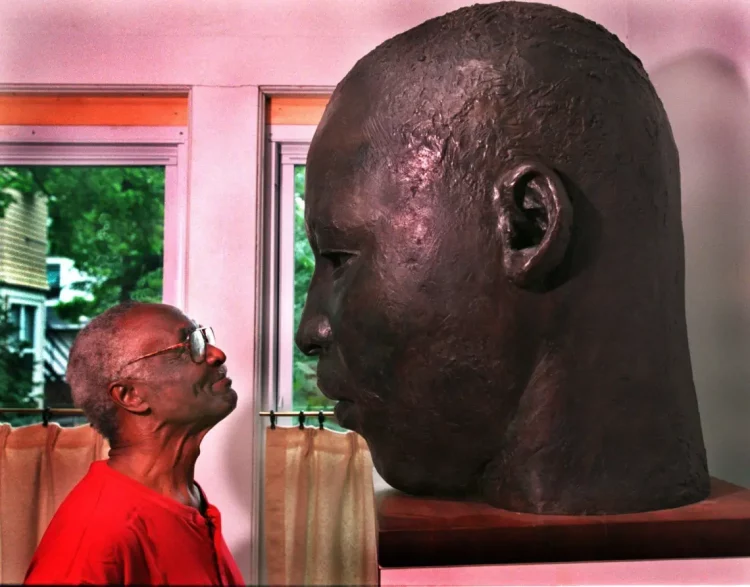
Up to this point, he had never visited the U.S. Capitol. “Somehow it seemed like the epitome of the seat of power, and it alienated me,” he later recalled. “I never felt part of it. But when I delivered the sculpture, that changed. I felt,
‘A piece of me is in that building.’” The King memorial bust continues to both convey the greatness of King and the creative effort of the sculptor, which he hoped would “stimulate people to learn more about King, to perpetuate his struggle.” At the bust’s unveiling, Sen. Charles “Mac” Mathias, Jr. noted that the sculpture assured that “Martin Luther King Jr. takes his rightful place among the heroes of this nation.” (New York Times, Jan. 17, 1986)
When John Wilson died in January 2015, almost thirty years had passed since the bust took its place in the Rotunda. In a review of his life, Boston Globe writer Bryan Marquard wrote about Wilson and the King bust. He noted that like “much of his most important work, the bust brings viewers to the intersection of art and politics, of pure creativity and the desire to examine social injustice.” These words help us understand that in creating the memorial bust, John Wilson invites the viewer to see Martin Luther King as both a man of protest and a great American patriot.
Note on Sources: The Architect of the Capitol website provides ample information on the Martin Luther King Memorial Bust. Regarding John Wilson’s remarkable life, see Bryan Marquard’s summary of his life and work in the Boston Globe (January 26, 2015). All unattributed quotations used in this blog can be found in the Marquard obituary. Robin Toner authored the New York Times article, “Best of Dr. King Joins Others of Nation’s Heroes” for the Jan. 17, 1986 edition.

